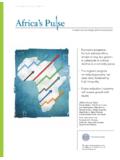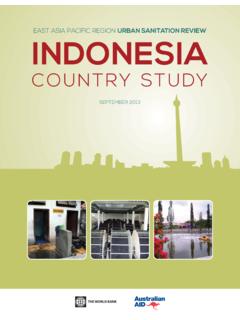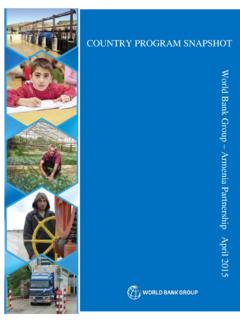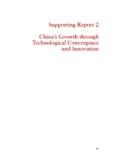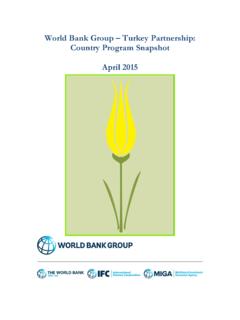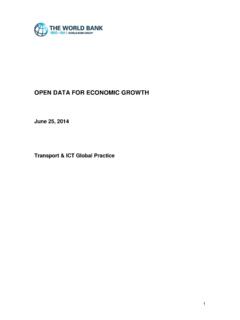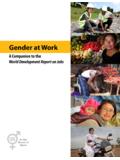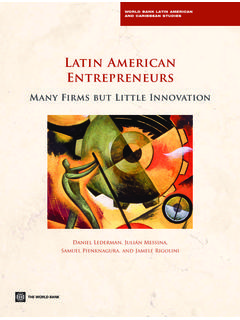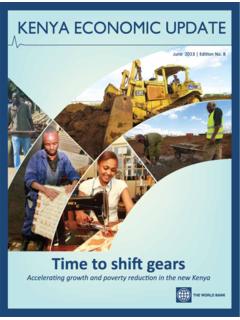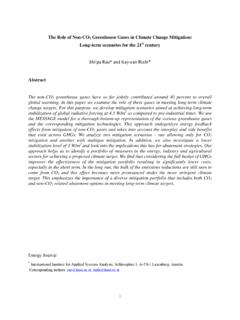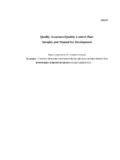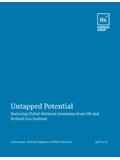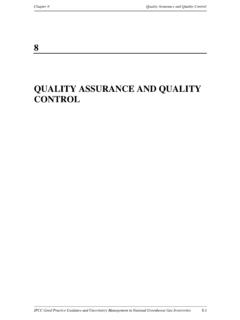Transcription of International Financial Institution Framework for a ...
1 International Financial Institution Framework for a Harmonised Approach to greenhouse Gas Accounting November 20151 The International Financial Institutions2 (IFIs) have been working together to agree a harmonised approach to project-level greenhouse gas (GHG) accounting. The rationale for this work is to harmonize GHG accounting during project appraisal. The purpose is to establish minimum requirements in undertaking this work, all of which each IFI can optionally exceed with additional considerations and reporting. The IFIs recognise that approaches to GHG accounting should be harmonised as far as possible, recognising the differing mandates and geographical coverage of each Institution .
2 A harmonised approach will improve consistency and comparability across IFIs, provide increased reliability for other users of the data, set a good-practice standard for other International Financial institutions , and facilitate the sharing of experience and lesson-learnt. This note sets out the agreed principles for GHG accounting. Policy Commitment Each of the IFIs is committed to accounting for the GHG emissions of direct investment projects that they finance. Each of the IFIs will state this commitment publicly in relevant policies and strategy documents. 1 This document was prepared in 2012.
3 Since then it has been merely updated to add the names of additional IFIs that have endorsed it. 2 The IFIs included in this initiative are the African Development Bank (AfDB), the Agence Fran aise de D veloppement (AfD), the Asian Development Bank (ADB), the European Bank for Reconstruction and Development (EBRD), the European Investment Bank (EIB), the Global Environment Facility (GEF), the Inter-American Development Bank (IDB), KFW Development Bank, the Nordic Development Fund (NDF), the Nordic Environment Finance Corporation (NEFCO), the Nordic Investment Bank (NIB), the UK Green Investment Bank, and the World Bank Group (WBG). Screening IFIs shall screen each proposed direct investment project for likely significant GHG emissions.
4 IFIs may establish de minimis criteria for GHG screening. IFIs will undertake GHG accounting for all direct investments consistent with the screening criteria. Where a sector or investment class is excluded from GHG accounting, this will be stated in the IFI s relevant policy and procedures. Methodology IFIs shall undertake the GHG accounting of a project based on established methodologies for ex-ante GHG accounting including the greenhouse gas emission calculation approaches as per, inter alia, the GHG Protocol, the Clean Development Mechanism methodology, Verified Carbon Standard, Gold Standard and the EU Emissions Trading Scheme, ISO 14064 (Part 1 and 2), or other International standards.
5 Definitions, assumptions and methodologies shall be recorded and made available to decision makers within the IFI and to external stakeholders as appropriate. The results of the GHG accounting shall be expressed in tonnes of CO2-equivalent, using the global warming potential of greenhouse gases as defined by the UNFCCC. GHG Emissions Accounting During project appraisal, GHG emissions of a project will be accounted for at appraisal as follows: Each IFI will estimate the gross (or absolute) GHG emissions that a project is expected to produce on an annual basis for a representative year once it is complete and at normal operating capacity.
6 The project boundary for GHG accounting should include all activities, facilities or infrastructure that the IFI is financing. Gross emissions from construction may be included in the assessment of annual emissions using reasonable assumptions about the project lifetime. GHG accounting will include Scope 1 and Scope 2 emissions (as defined in the GHG Accounting Protocol).3 Each IFI may choose to include Scope 3 emissions attributable to a project, but this should be clearly stated in relevant policies, procedures, and results. Gross emissions are to be estimated for existing and greenfield projects.
7 3 In order to capture the development and mitigation contribution of projects, net (or relative ) GHG emissions against a baseline will be assessed as follows: Each IFI will estimate the net GHG emissions contribution that a project is expected to achieve on an annual basis for a representative year once it is complete and at normal operating capacity. The IFI will calculate net emissions as compared to a baseline scenario. This reference scenario may be either a without project scenario or an alternative scenario that reflects the most likely alternative means of achieving the same project outcomes or level of service.
8 As net GHG emissions may be a subcomponent of a larger project, the boundary of the net GHG accounting can be limited to the single activity, facility, or infrastructure resulting in net GHG emissions. Any net GHG accounting should include all Scope 1, Scope 2, and, as with gross emissions, Scope 3 where applicable. Leakage in Scope 3 emissions should be included in sectors where this is identified as an issue Reporting At a minimum, each IFI shall report annually on the aggregate net GHG emissions for screened-in mitigation projects, estimated to arise from the previous year s approved or signed 5 In addition, IFIs may choose to undertake additional reporting on baselines, gross emissions, portfolio-wide net emissions, lifetime GHG emissions, etc IFIs may choose to further disaggregate GHG data by sector, country or project.
9 Further Cooperation This document will be subject to periodic review as appropriate. The IFIs are committed to further cooperation and shared learning in the area of GHG accounting, and will continue to work together on important issues in the future: including consideration of different approaches for GHG accounting of other types of projects. The IFIs will work to establish a mechanism for data sharing and peer review of their GHG accounting. 4 GHG emissions will be reported only for the year of approval/contract signature, and not again in subsequent years.
10 5 Multilateral Development Banks (MDBs) will report on mitigation activities in accordance with the typology of the Joint MDB Report on Mitigation Finance. Where IFIs are co-financing a project, they will work together to agree as far as possible on a common estimate of the GHG emissions. Taking account of regulatory and voluntary practice, the IFIs will contribute to the development of robust accounting standards and monitoring, verifying and reporting (MRV) procedures.

